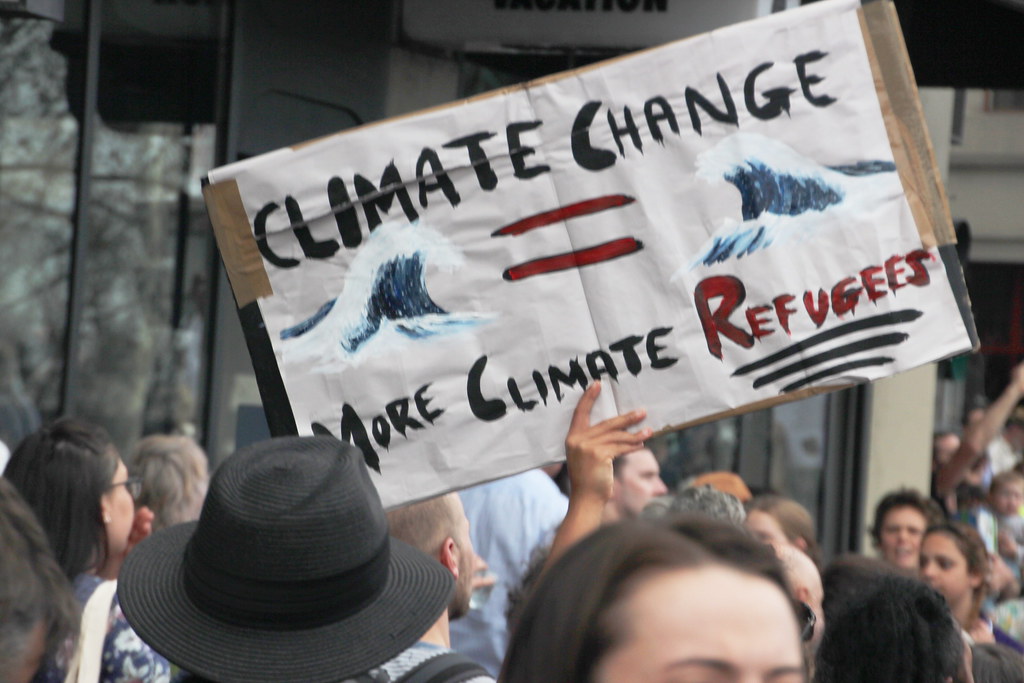
John Englart / Flickr
By Yuyan Pu, F22 Environmental Clinic Student
The playbill for September’s political theater featured the surprising appearance of immigration amid record-breaking inflation and accelerating setbacks to reproductive rights. Taking the spotlight are Republican governors of Florida, Texas, and Arizona who have all created their respective state-funded programs to bus migrants from the southern border to Democratic sanctuary jurisdictions like Washington, D.C., New York, and Chicago. Many of these migrants are Central and South American asylum-seekers fleeing specific threats to their health and safety. And like many complex policy issues, this American immigration situation is further complicated and exacerbated by climate change.
Climate change is an aggravating factor behind increased migration at the American southern border. In 2020, an extremely active hurricane season devastated Central America with two category 4 hurricanes directly hitting Honduras, Guatemala, Nicaragua, and El Salvador. Hurricane Eta, specifically, caused one of the worst weather-related disasters in the past 20 years for the region with severe incidents of torrential rain, flash floods, landslides, and crop damage. Livelihoods were lost, access to clean water was cut off, and homes were swept away. As a result, many displaced Central Americans crossed the border into Mexico to seek refuge in the United States. They were climate refugees, people displaced in the context of disasters and climate change, and they are not unique. The United Nations High Commissioner for Refugees (UNHCR) finds that on average, 21.5 million people are forcibly displaced every year by weather-related events. UNHCR’s report Global Trends in Forced Displacement 2020 estimates that 95 percent of all conflict displacements in 2020 occurred in countries vulnerable to climate change, including Central and South America.
Climate change is a threat multiplier by aggravating underlying vulnerabilities of the status quo and creating new potential pain points. Not only will climate change cause more migration, but it will also make the journey deadlier for those seeking asylum to reach America’s border. Along the American Southwest are miles of arid desert that are only going to get hotter and more difficult to navigate with climate change. Over the next 30 years, a migrant’s attempt to cross the American border will become more dangerous as the climate warms.
The divisive issue of immigration occurs against the backdrop of the unassuming situation of America’s own internally displaced people. Isle de Jean Charles once encompassed more than 22,000 acres of the Louisiana coast, but decades of punishing climate change consequences have now culled the island to only 320 acres of land above water. Saltwater intrusion has killed local flora, grasslands have seceded to advancing bayous, and devasting storms have shattered houses into wreckages. The island residents are predominately of indigenous ancestry, and for tribes like the Jean Charles Choctaw Nation, 98 percent of their ancestral land is now underwater. In 2016, the U.S. Department of Housing and Urban Development (HUD) awarded Louisiana $48.3 million to resettle the Isle de Jean Charles community to higher ground about 40 miles north. The money came from the state’s winning application to HUD’s National Disaster Resilience Competition, but the contest inevitably pitted historically marginalized communities against each other—an indigenous Alaskan village suffering from erosion and flooding also competed for the funding that became earmarked for Isle de Jean Charles. Set to be completed this year, the Isle de Jean Charles plan is posed to be Louisiana’s first official resettlement of climate-induced, internally-displaced people. Nevertheless, we can expect more government-sponsored resettlement plans in Louisiana and across the United States. Nearly one million Americans were displaced by disasters in 2019, and Florida State University research predicted that more than 13 million Americans may be forced to relocate by 2100 due to sea level rise.
On November 2021, a year following the devastating hurricane season in Central America, President Joe Biden released a White House report that officially recognizes the connection between climate change and migration. The acknowledgment of a key nexus point is important, but the political spectacle of America’s domestic immigration policy stalls any meaningful progress. Instead, a national reimagination of the issue to focus on the root causes of migration, especially climate-related migration, needs to take center stage.
The articles published on this site reflect the views of the individual authors only. They do not represent the views of the Environmental Clinic, The University of Texas School of Law, or The University of Texas at Austin.
